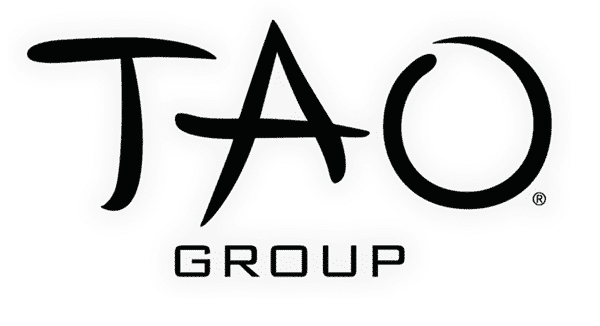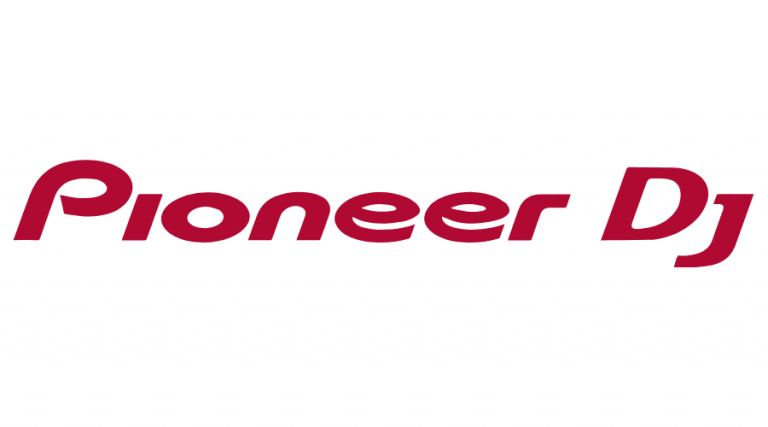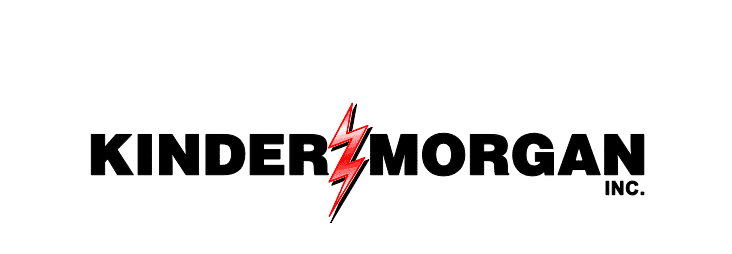Social media is a ravenous beast with an insatiable appetite for content. It is almost humanly impossible to keep creating riveting content to keep your followers and subscribers constantly engaged. And with the constant changes in social media algorithms complicating things further, a content rut is always on the horizon. If you are just a social media personality, you can probably take a break and come back stronger.
Businesses, however, don’t have this luxury. The competition is intense and you can fall behind in the race for new audiences and potential sales if you take the foot off the gas. If you are stuck deep in a content rut, it is time to join hands with the right digital content marketing partner to help you change your social media branding game. Check out these pro tips on how to rebrand your social media to reach new audiences, drive qualified traffic to your page, and have your viral moment!Signs that you are Stuck in a Social Media Content Rut
Even the greatest of marketers and content creators sometimes experience prolonged periods of inactivity or unproductivity. For larger corporations, content rut may not be a significant issue, since they have the resources to maintain or hire multiple creator teams as a backup. This is one reason content ruts are more common in small/medium businesses and freelance creators. When the creative juices run dry, they don’t often have the resources to hire someone else to fill the void. If your social media channels are experiencing the following symptoms, you are probably in a content rut:- User engagement is on a clear downward spiral
- Your content feels dull, flat, and uninspired
- Making even a small post feels like a heavy burden
- You don’t enjoy the creative process any longer
- You run out of ideas and have to work harder than usual
Short-term Hacks to Get Out of a Content Rut
When you face a severe content rut in your social brand-building journey, you can rely on a few simple tactics to add new content in the short term. While you are at it, some of these social media marketing tips may even help reignite your creative spark!#I. Reinvent your old content
The beauty of social media is its ability to accept content in a wide range of formats. You can have text blogs, videos, images, infographics, and more. This gives you some leeway in recycling your earlier published content. You can try creating a fun infographic or video based on an older blog post. Or you can go in the opposite direction, creating relevant text content based on videos or infographics or some compelling social media posts, filled with relevant keywords for maximum visibility and reach.#II. Try to invite guest bloggers
Hiring an in-house freelance content creator can be quite expensive. But you might be able to get quality content for free through the practice of guest blogging. All you need to do is find a popular blogger operating in a niche that is relevant to your business. Allow them to create a punchy opinion post and get it published for free on your platform. This is a mutually beneficial arrangement for both parties. And on the plus side, you may even get inspiration from third-party content!#III. Look at current affairs
In social media, there is no shortage of hot topics for debate. Pick a recent one where you have some interest and weigh in with an analytic blog post or opinion. This could be a poignant way to encourage some community engagement on your social media handles. While being a little provocative is perfectly acceptable, try not to take things too far. Make sure your social media brand voice resonates with your core business values. Picking a politically charged topic will make your brand open to criticism and dislikes from different sides. So tread lightly!#IV. Switch from text to visual
If you are suffering from writer’s block, the best thing to do is switch to visual content. Original content in the form of images you have personally clicked from your workspace or office can be used to give your viewers inside access. People love a behind-the-scenes post. Another option is to try your hand at creating simple how-to guides in video format. If you don’t have much experience in video editing, it may be time you added that capacity to your organization – either personally by learning, or by hiring a professional firm with proven expertise in social media marketing strategy.#V. Get inputs from your audience
If you are short on ideas, you can always rely on your followers and subscribers to help out in a pinch. Ask for suggestions on future posts, or conduct opinion polls to find out things your audience would like to see on your social media handles. You can also check out online reviews of your products or services. As part of your social media branding efforts, engage with these reviewers constructively to improve your brand perception and encourage further user engagement and debates. While many of these are useful in a pinch, they cannot be considered as long-term solutions for a business problem. Ideally, you want to reduce the risk of content shortage on your social media accounts. For that, you need to strike at the root cause.Key Factors that Increase the Risk of a Content Rut
On a long enough timeline, you will eventually run out of creative energy. Many genius storytellers often experience the dreaded “writer’s block” – a phase where they are simply unable to get anything worthwhile on paper. The risk of a block or rut is much higher in business social media accounts as the demand for new content is never-ending. Several missteps can accelerate this process and small business owners are more likely to make these errors. We can broadly divide them into two categories:- Your social media account was not well branded in the first place
- You are delaying a much-needed social media rebranding exercise
- Social Media Brand Strategy 101 – will help you avoid beginner mistakes the next time you create business accounts on platforms like Facebook and Instagram.
- Social Media Rebranding Guide – this is for those content creators who are in a rut and need to find ways to refresh their flagging social media pages.
Social Media Branding Strategy 101
Social media branding is all about building valuable connections with your target audiences. For a business owner, social media platforms represent a powerful tool for both marketing, sales, and even customer service. In recent years, social media marketing and branding have emerged as a dominant discipline within digital marketing. With more than 4.48 billion regular users, platforms like Facebook, Twitter, Instagram, and Snapchat give business owners quick access to a massive audience. It doesn’t matter if you are a globe-spanning corporation or a small local business – with the right tactics, you can maintain an even playing field as a minnow. We witnessed over the last 8-10 years, as businesses and customers started embracing social media in a big way. Early on, many local businesses achieved high levels of customer engagement and generated significant growth velocities. But in recent years, this has cooled off considerably. The saturation of the marketplace, new algorithms, and new platform rules have all played a part. But in the case of many small business profiles, we can find certain common mistakes that contribute to stagnation and low audience engagement.#1. Common Social Media Branding Mistakes
Before we get into the best practices for social medial brand recognition and brand image for business owners, we need to take a quick look at some rookie mistakes in social media campaigns.#I. Picking the wrong platforms
“Build it and they will come” is a memorable quote from the movie Field of Dreams. When it comes to social networks, you also need to decide where you are building your brand. You see, networks are wired differently as far as user demographics are concerned. For instance, you may see more older adults on sites like Facebook, while the younger generations are more active on Instagram and Snapchat. If you want to engage with a particular segment, you have to pick the right social network for the job. Many business owners fail to understand this important aspect. They pick one popular platform which does not have many users from their target audience. The result – they find few takers on the networks they join, resulting in poor marketing performance.#II. Spreading yourself too thin
Compared to the previous mistake, this one lies on the opposite end of the spectrum. Instead of committing to just one platform, you end up with accounts on four or five of them. And you try to split your time and resources equally among them all. The end result – you don’t have enough time to deliver top-quality content on any single handle. In all fairness, having a Facebook business profile, a Twitter handle, Instagram account, and Snapchat/WhatsApp/YouTube account simultaneously is often a good thing for visibility. But that does not necessarily mean that you have to give equal importance to them all. Instead, a far more effective option is following the 80/20 rule – give more importance to one particular network where most of your target audience tends to congregate.#III. Ignoring data analytics
Data is the critical treasure trove of the digital arena. You can find a ton of insightful information from data analytics on social media. Most networks provide at least basic tools for analyzing incoming traffic and engagement levels. If you are ignoring these tools, you are doing your social media branding a massive disservice. You can use the insights they deliver to optimize your content, generate more followers, and create new leads.#IV. Not staying informed about new features
Networks like Facebook and Twitter are constantly adding new features and capabilities. Facebook in particular has pivoted heavily towards businesses in recent years. Business owners who fail to keep themselves updated about these changes will fall behind the competition. These are just a few of the many mistakes that plague beginner business social media accounts. Now that you know what to avoid in general, it is time to take a look at doing things the right way in social media branding.#2. What Goes into a Well-branded Social Media Account?
A well-crafted and expertly maintained social media presence is an asset to any business. It is a highly cost-effective form of marketing, with a chance to boost brand visibility, sales, customer satisfaction, and customer loyalty. It has the following hallmarks:#I. Consistent handles across platforms
Iconic brands all have one thing in common – consistency. It doesn’t matter if you see a Coke ad or marketing content on a website, a TV ad, in a newspaper, or on their social media accounts – you will instantly recognize the brand from its iconic logo, fonts, and red color. You need to apply the same principles across all your social media accounts. Uniformity and homogeneity are crucial to reinforce the brand identity in the eyes and minds of your target audience. Most businesses have some form of brand guidelines – a set of clearly laid out rules that establish how your brand identity should be presented to the world at all times. Follow this guideline as much as possible across your profile images, banners, and other visual content. Use the same logo, colors, and fonts everywhere. If this rule is not strictly enforced, it will dilute your branding efforts and create confusion in the minds of the target audiences. You don’t have to create these from scratch – just follow your pre-existing brand identity.#II. Professionally written and attention-grabbing bio
All companies have a specific personality that they want to present to their customers. For a brand like Red Bull, it would be energetic and exciting. Meanwhile, Amazon positions itself as sincere, reliable, and competent. These brands use a specific style of writing and tone to accurately present these personas and qualities to the market. You need something similar when crafting your bio for a social media account. If you already have a brand voice, you should follow the same rules across multiple platforms for the sake of consistency. Some platforms may have less space for bios than others – every word counts in such circumstances. A well-written bio will tell your brand story and convey the value customers can claim by doing business with you, in as few words as possible. A poorly crafted rambling bio without proper editing can tank your credibility. This task is often left to professional copywriters for the best results.#III. Branded highlight covers
Highlight covers are a very useful feature available on Instagram. As the name suggests, they are like a customizable highlights reel for the best stories on your Instagram page. Visitors can take a quick peek at your best content using this feature. These highlight covers stay much longer than the 24-hour deadline you have on regular stories. Since it is often the first glance any visitor takes when they visit your page, highlight covers are vital for a positive first impression. Instead of picking random stories for the covers, select stories that have a deep connection to your brand identity and business. For example, a book publisher may opt to provide covers that feature their most popular authors. A fashion brand would probably use highlight covers to display their latest fall/summer/spring collections. You can curate up to 100 such stories, adding new ones and removing outdated ones.#IV. A cohesive grid view
On Instagram, the grid view gives visitors a bird’s eye view of your posting history. It can represent the sum total of your brand identity on the platform. A carefully arranged grid gives your account air of sophistication. There are many options when it comes to the grid arrangement of your stories:- Arrange photos that feature your brand palette
- Create a checkerboard with a combination of images and text quotes
- Design rows with separate colors
- Use horizontal or vertical columns to create larger connected images
- Transition across multiple colors with each layer on the grid
#V. Well written captions that express your brand voice
Brands have always used catchphrases and slogans to reinforce their identity personality in the minds of their customers. With the rise of social media, these captions and slogans have now migrated to the digital arena. On social media networks, space is at a premium. And with the perilously short attention spans of modern online customers, businesses need something that will immediately arrest the attention of the viewer. And you can also add captions to all images posted on your platforms. The combination of brand images and branded captions is an excellent way to market your business services and products to interested customers.#VI. Branded hashtags
Hashtags serve a vital purpose on platforms like Twitter and Instagram. Businesses have the option to create hashtags that are unique and linked solely to their brand. Marketing campaigns that utilize branded hashtags lead to better outcomes than regular campaigns. For instance, surveys indicate that using branded hashtags on your Twitter video posts can generate 6x more interest in the ad. On Instagram, you can increase user engagement by a whopping 12.6% with just a single hashtag. When creating branded hashtags on platforms, try to include the following essential features:- Simplicity – hashtags should be short, easy to spell, and easy to remember
- Specific – the hashtag should clearly identify a topic that is integral to your brand identity
- Creative – try to include elements of humor or unique twists to make the hashtag more interesting
#3. What Social Media Platforms Should Your Business be on?
As we already explained in detail, successful brands tend to focus the majority of their social media resources on one particular platform. The choice of this platform is determined by its popularity among the brand’s target audience. Other factors can also influence this decision – chief among them is the type of business model used. Let’s look at each factor in closer detail to get a better idea of how things work out here.Best platforms for certain demographics
Out of a total global population of 7.9 billion (2022 figures), around 3.9 billion are regular social media users. Nearly half the world’s population can be reached on these digital channels. And the number is increasing at an annual rate of approximately 5%. With half of humanity connected to these platforms, businesses should have no trouble finding their key demographics. But for maximum reach, you need to know which platforms give you a better chance of connecting with your preferred customers, based on factors like age, location, interest groups, and income levels.Age
One platform with broad appeal across all age groups is Facebook. It is the preferred platform for 86% of people between ages 18 – 29, 77% of users between ages 30 – 49, and 51% of users between ages 50 – 65. Older people above the age of 50 are less likely to use Instagram, with 23% users. The platform is favored younger users between the ages of 18 – 29 (67%) and 30 – 49 (47%). YouTube is very popular among all age groups, with most of them reporting over 58% users. However, the popularity of Facebook is fading among teenagers below the age of 18. This demographic has been leaving the platform in droves, opting for alternatives like Tiktok and Snapchat for their social media interactions.Location
While Facebook is the most popular platform in the world with 2.9 billion users, it is closely followed by YouTube (2.5 billion) and Whatsapp (2.0 billion). Users in Russia and China prefer home-grown platforms like VKontakte and WeChat instead. But in most other countries around the globe, the top spot is occupied by one of these three platforms. While users in the US, Brazil, and Indonesia prefer YouTube, Facebook is more popular in Canada. Even in places where Facebook is leading, YouTube is a close second, highlighting the importance of video content.Interest groups
Though they do not attract billions of users, platforms like Twitter, Instagram, and LinkedIn hold special interest for businesses involved in specific niches. For instance, Instagram is heavily favored by fashion, lifestyle, and travel businesses due to the platform’s ability to attract individuals interested in these niches. Twitter and LinkedIn both attract highly educated individuals involved in various academic, commercial, and scientific research fields. Brands selling to B2B clients, in particular, may benefit from an active presence on these platforms.Income level
Platforms like Facebook, Youtube, and Whatsapp have broad appeal across people of all income levels. But low-income groups are under-represented on platforms like LinkedIn. A business targeting that demographic would benefit from an increased focus on platforms with more mainstream appeal.#4. Best Social Media Platforms Based on Business Model
You should also take into account your company’s business model when picking a platform for social media branding strategy and social media advertising.E-commerce
With its unparalleled reach and access to special features like an in-house shop, Facebook is a great option for online sellers everywhere. It is also a great network for some advertising and brand promotion. Another option with a virtual eCommerce storefront is Facebook’s sister app Instagram. The latter encourages direct selling via its shopping platform, which comes with a direct checkout option. You can also redirect visitors to your website store for purchases.Brick and mortar
For traditional brick-and-mortar stores, social media presents multiple options in branding and marketing. You can use them solely for advertising and marketing purposes, Or you can also use them to venture into direct selling online. For advertising, Facebook, YouTube, and Whatsapp are all interesting choices with a ton of potential. Since Youtube doesn’t have any dedicated digital storefront, you may have to rely on the likes of Facebook and Instagram for their future direct sales enterprise.Products vs. Services
If you are selling a physical product, you will probably find more features for both marketing and selling it on platforms like Instagram and Facebook. However, if you are some kind of service provider, you can also look at Youtube as an option to expand your audience and improve your visibility through interesting tutorials, informative DIY video guides, and so on.#5. Other Types of Marketing to Maximize Social Media Efforts
Apart from social media groups, businesses have access to a wide range of other digital marketing channels and best practices. Many of them share a complementary relationship with social media accounts. Here are some examples:SEO
Search Engine Optimization (SEO) is a set of processes designed to improve the ranking and visibility of web pages on search engine results. Since Google is the most popular search engine online, SEO usually refers to tactics that can boost your visibility to the Google search algorithm. Social media profiles often rank higher than websites in Google search results. Business owners can use this feature to their advantage. You can optimize the information provided on your social media profiles to make them more “algorithm-friendly.” The steps include:- Avoiding duplicate or plagiarized content
- Adding original, useful, or informative content
- Adding relevant links and sources to the information provided
- Unique and relevant titles
- Images with precise labels or descriptions
- Excellent grammar and editing
PPC
In the past, Pay-per-click (PPC) ads existed solely on websites. These days, you can even find social media versions of these ads. They work on the same simple premise – these targeted ads are published on sites and platforms that attract the chosen demographic. Ideally, the ads should display the latest brand logo, visuals, and links to your store page. The aim here is to improve your chances of getting a click and generating a sale. When an interested party clicks the ad, the advertisers are paid a small amount for each click.Content marketing
To sustain audience interest and increase engagement levels on your social media profile, you need frequent posts of high-quality content. Content marketing does precisely this – creating and sharing content online to stimulate interest in a particular brand or product. Content marketing is a very subtle art that does not include any explicit promotion of your brand. The content may include videos, images, games, apps, trivia, and more. Since you need a constant stream of interesting posts, content marketing has limitless potential in social media branding.Email and SMS marketing
Although they are gradually losing to social media and messaging services, email and SMS remains a potent tool for marketing. You can still combine email and SMS marketing to improve your brand visibility on social media. All you need to do is add links to your emails and SMS campaigns. The messages are bound to bring interested parties to our social media handles for increased brand visibility and new followers.Social Media Rebranding Checklist
Rebranding is a common process in business. Many enterprises seek a change in the overall visual style, branding elements, and the overall brand identity. This can happen as often as once per decade, due to several reasons:- Outdated design and brand identity
- Evolution of the target audience preferences
- Expansion of the business into new markets
- Poorly designed brand identity
- Mergers and acquisitions
- Scandals and crisis management
#1. Audience and Competitor Research
Changes in the market over time are one of the key reasons to plan a rebranding project. All businesses start with a focus on certain specific demographics of customers. After a few years, thanks to expansion to new product ranges, the company may start attracting a new group of customers. To woo these customers, you need a compelling personal brand persona and identity that appeals to their preferences and aspirations. To learn more about these, you need to conduct audience research. There are several options for this, including surveys, opinion polls, online reviews, and focus groups. Apart from your target audience, another group that you need to look at is the competition. Rival businesses with more efficient branding strategies can poach your customers. In order to improve your brand identity, you need to conduct competitor research to learn effective branding tactics as well as mistakes to avoid.#2. Develop Brand Guidelines
After compiling and analyzing the data collected from audience and competitor research, it is time to develop comprehensive brand guidelines for the corporate rebranding project. Usually carried out by seasoned marketing and design professionals, brand guidelines include the following basic ingredients:#I. Colors
Colors evoke strong emotions in our minds. The science behind this is called color theory. Most rebranding efforts look at color theory before picking a new color. The choice is often defined by your business sector – banks, for instance, tend to use various shades of blue as it is a very comforting and reassuring color.#II. Fonts
There are serious and mature fonts and then there are youthful and lighthearted ones. The choice of fonts during a rebrand is decided by many factors, but chief among them is this – how well would the new font fit with the organization’s brand personality and tone.#III. Mood board of images
A mood board is like a palette made up of images. In branding, mood boards are extensively used to create a broad framework of acceptable visuals that you can use in the company’s social media platform profiles. It is like a visual representation of all the acceptable elements that you can include in your revamped brand identity. Mood boards are usually anchored by a central theme, which is based largely on the brand guidelines.#IV. Brand voice/tone
If your company is about to sell products to an entirely new demographic, you may have to reset the brand voice and tone. Again, the decision should be based on inputs from the customer outreach and the suggestions from brand guidelines. For example, if your business model is shifting from manufacturing affordable, low-budget products to more sophisticated exclusive products, what do you do? It’s quite simple – you may want to adopt a different persona, with a more sophisticated tone and voice.#3. Create Your Social Media Calendar
Once you have decided on the minor and major aspects involved in your social media rebranding project, it is time to move on to the next step. A social medial calendar is literally a schedule of all your upcoming media posts and other digital engagements. Content creators use these calendars to plan their content release schedules days or weeks in advance. The entries on this calendar will have the following elements:- Date and time of releasing the new content
- The social network on which it will be released
- Any creative content used in the post
- All hyperlinks and tabs to be added to the post
#4. Social Media Profile Refresh
Once your calendar is ready, it is time to execute the social media rebranding. Depending on the circumstances, the process could involve changes to a few aspects or a radical overhaul of the pre-existing social media branding. From a social media platform perspective, the following elements are crucial:- New icon image for Facebook, Twitter, and YouTube profiles
- Branded highlight covers for Instagram pages
- Updated bios for all social media platforms
#5. Tease the Release of Your Rebrand
Releasing occasional sneak peeks of the proposed changes to the brand identity is a common trend these days. It helps generate a healthy buzz about the brand in the run-up to the rebranding launch day. You can do this through still images of new palettes, short videos that show behind-the-scenes action, and more. A rebrand is a massive occasion for any business. On the big day, you want as many eyes on the event as possible.#6. The Rollout of New Posts
On the big day, always remember to include a clear explanation for the reasons behind the drastic move. Make it a point to highlight the positive impact the rebranding will bring to your target social media audience. An FAQ page, a dedicated video, and press releases are all good options to include as part of a social media rebranding rollout. The content should answer the following questions in one way or another:- Why did you change your brand/company name?
- Is your company different now?
- What is the meaning of your logo?
- What is the meaning of your new name?
- Engagement management






















